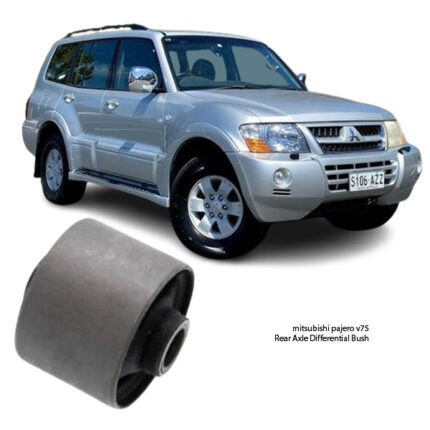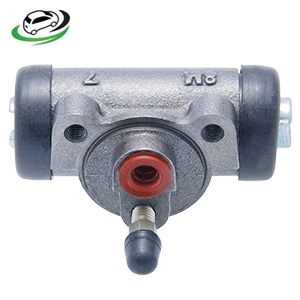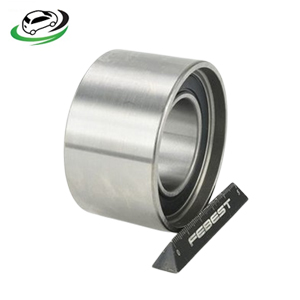Get Subaru EJ20 Tensioner Bearing
The tensioner bearing, also known as the idler pulley bearing or belt tensioner bearing, is a critical component of a vehicle’s engine accessory drive system. It is typically housed within the tensioner assembly, which is responsible for maintaining proper tension in the engine’s serpentine or accessory drive belt.
Benefits;
1. Precise Belt Tension:
- Consistent Tension: Tensioner bearings ensure that the accessory belts, such as the serpentine belt or timing belt, are maintained at the correct tension. This consistent tension is vital for optimal performance and longevity of the belts and driven components.
- Prevents Slippage: Proper belt tension prevents belt slippage, ensuring that power is efficiently transferred from the engine to various accessories, such as the alternator, power steering pump, air conditioning compressor, and water pump.
2. Reduced Wear and Tear:
- Minimized Belt Wear: By maintaining proper tension, tensioner bearings help minimize wear and tear on the belts and other components of the belt drive system. This extends the service life of the belts, reducing the frequency of replacements and associated maintenance costs.
- Prevents Belt Damage: Inadequate tension can cause the belts to wear unevenly or develop cracks, leading to premature failure. Tensioner bearings prevent such damage by ensuring uniform tension distribution across the entire length of the belt.
3. Enhanced Engine Performance:
- Efficient Power Transmission: Optimal belt tension facilitated by tensioner bearings ensures efficient power transmission from the engine to the accessories. This contributes to smoother engine operation and consistent performance under various driving conditions.
- Prevents Component Overloading: Proper belt tension prevents excessive loading on accessory components, such as the water pump and alternator, allowing them to operate within their designed parameters and maximizing their longevity.
4. Improved Engine Efficiency:
- Reduced Friction Losses: Properly tensioned belts result in minimal friction losses within the belt drive system. This helps improve overall engine efficiency by reducing parasitic losses, contributing to better fuel economy and performance.
- Optimal Accessory Operation: Accessories driven by the belts, such as the alternator and water pump, operate more efficiently when the belts are properly tensioned. This ensures optimal electrical generation and cooling system performance, enhancing overall engine efficiency.
5. Enhanced Reliability:
- Preventative Maintenance: Tensioner bearings contribute to the reliability of the engine accessory belt drive system by minimizing the risk of belt-related failures. Regular inspection and maintenance of tensioner bearings help prevent unexpected belt failures and associated breakdowns.
- Extended Component Life: By ensuring proper belt tension, tensioner bearings help prolong the service life of accessory components and reduce the likelihood of premature failures, enhancing the overall reliability of the vehicle.
Signs a car needs a new Tensioner Bearing;
1. Squealing or Grinding Noises:
- Audible Noise: A common sign of a failing tensioner bearing is squealing, chirping, or grinding noises coming from the engine bay. These noises often occur when the engine is running and can be particularly noticeable during acceleration or when turning the steering wheel.
2. Belt Misalignment or Slipping:
- Belt Misalignment: A failing tensioner bearing may cause the accessory belts to become misaligned or slip off their pulleys. This can result in a loss of power to vital components like the alternator, causing electrical issues or a dead battery.
- Visible Belt Wear: Inspect the accessory belts for signs of wear, fraying, or glazing, which may indicate that the tensioner bearing is not maintaining proper tension on the belts.
3. Excessive Belt Tension or Slack:
- Uneven Belt Tension: A failing tensioner bearing may fail to maintain consistent tension on the belts, leading to uneven belt wear or premature failure of belt-driven components.
- Excessive Belt Slack: On the contrary, if the tensioner bearing seizes or fails, it can lead to excessive slack in the belts, causing them to slip or lose traction on the pulleys.
4. Vibrations or Pulley Wobble:
- Engine Vibrations: A failing tensioner bearing may cause vibrations or shaking in the engine bay, especially at idle or when the engine is under load. These vibrations may be felt through the steering wheel or the vehicle’s body.
- Pulley Wobble: Visibly inspect the tensioner pulley for any wobbling or play. Excessive play in the pulley can indicate a worn or failing tensioner bearing.
5. Overheating or Burning Smell:
- Belt Overheating: A seized or failing tensioner bearing can cause excessive friction and heat buildup on the accessory belts, leading to overheating. This may produce a burning smell and could potentially lead to belt failure or engine damage if left unaddressed.
Follow us on Facebook for more parts.



